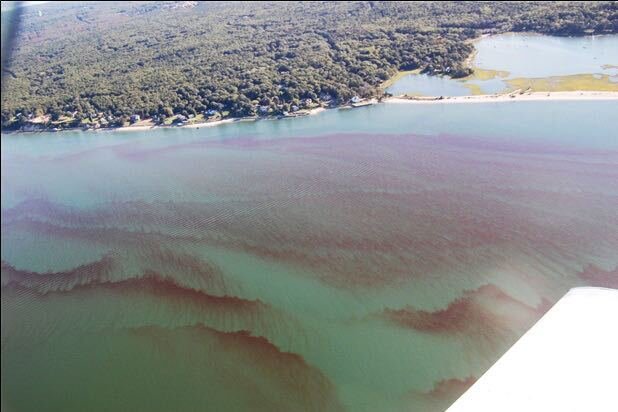Long Island funeral home’s illegal cesspool highlights region’s water risk
Feb. 21, 2025, 6 a.m.
Embalming fluid rinsed off tools was among the waste that went straight into the sewage tank, according to EPA officials.

An illegal cesspool at a Long Island funeral home highlights the ongoing risk posed by the sewage systems that have contributed to a spike in water pollution in the region.
EPA documents posted last month reveal that Whitting Funeral Home in Glen Head was violating the Safe Drinking Water Act by flushing its waste into an illegal “large capacity” cesspool. Embalming fluid rinsed off tools was among the waste that went straight into the sewage tank, according to EPA officials. Documents indicate the funeral home also had a drain in the floor of its embalming room. The funeral home, which didn’t respond to inquiries, agreed to bring the nasty subterranean waste pit into compliance with EPA regulations.
The episode is an example of the environmental risk presented by on-site sewage disposal on Long Island. Research by environmental groups and the U.S. Geological Survey has found that Long Island’s water is particularly vulnerable to contamination due to its close proximity to the soil under residents’ feet. A significant risk comes from the many septic tanks or cesspools still used in many homes on Long Island. In Suffolk County alone, where about 75% of homes have on-site sewage disposal, there are approximately 250,000 cesspools that discharge “raw, untreated human waste,” according to a 2019 report by local health officials.
”With cesspools, you'll have basically rapid movement of contaminants through the subsurface that cause an adverse effect at some distance – whether that's getting into a drinking water well, or causing algal blooms off the coast of Long Island,” said Mark Elliot, a professor at the University of Alabama's Center for Water Quality Research.
Long Island’s septic tanks and cesspools have been identified as the source of contamination harming water quality and the local shellfish industry since at least the 1980s, according to the Nature Conservancy. There were about 220 beach closures or advisories due to poor water quality on Long Island in 2023.
A Stony Brook University study found a record number of algal blooms and dead zones on Long Island’s coastal waters last summer. Scientists found 36 dead zones, or waters where oxygen levels are so low that nothing can survive.
“Visual examples of that are seen in Long Island, New York where there's significant enough cumulative impact of septic tanks from these low density settings that you have high nitrogen phosphorus elevated in the marginal waters, which affect oysters, which then people are eating,” said Upmanu Lall, director of Columbia University’s Water Center.
Cesspools were banned from new construction in the 1970s. Septic tanks are similar, but they contain bacteria that helps treat sewage. Both forms of on-site sewage disposal pose a risk to clean water because they can leak.
The Nature Conservancy says that efforts in recent years to protect and restore Long Island’s water have begun to pay off, but now more frequent floods exacerbated by climate change have created a new risk.
“Climate change poses new threats as rising sea levels and more extreme weather put a strain on antiquated wastewater systems,” the group states on its website.
Last year, Suffolk County voters approved a $6 billion measure to modernize sewage infrastructure and protect water supplies.
Effort to restore NY Harbor's oyster population encounters problem: They keep dying